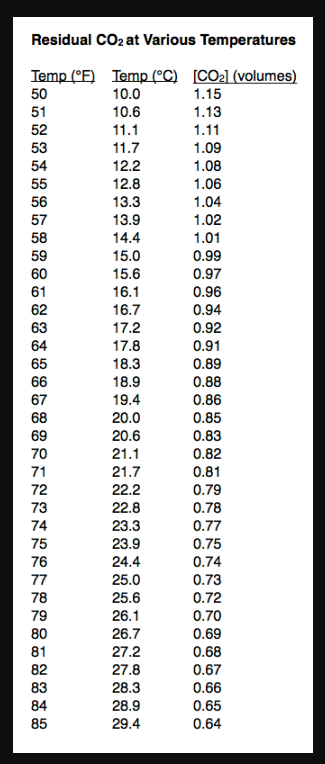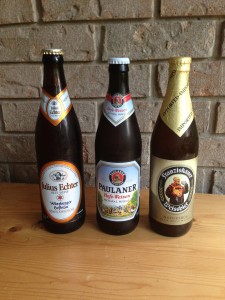This article has four sections preceding it — the concept of a brut IPA, the grist, and the mash, the enzyme used to make a highly fermentable wort, hopping and the boil, and fermentation.
Brut IPA is meant to be fizzy. And, there are a couple ways you can accomplish this. As with any beer, you can force carbonate it in a keg, or bottle condition it. However, given the high level of carbonation desired, you will need to approach this differently, in some ways, from when producing a beer with an ordinary level of carbonation.
How carbonated should a brut IPA be? Given that this type of beer currently only exists as a cluster of individual examples, you have some leeway to decide for yourself. The average level of carbonation in an ordinary craft beer or standard lager is 2.4–2.6 volumes of CO2. Anything over this should count as more highly carbonated. For reference, Belgian tripels and Belgian strong golden ales are often around 4.0 volumes of CO2, German wheat beers can have carbonation levels as high as 5.0 volumes of CO2, and Champagne is often around 6.0.
Kegging
To force carbonate a beer, you need to store the beer cold, in a sealed container, under CO2 pressure. Over time, the CO2 will dissolve into the beer, carbonating it. To get the correct level of carbonation, consult a beer carbonation chart. If you know the level of carbonation you are shooting for, and the temperature in your beer fridge, it will tell you what the gauge pressure on your CO2 tank should be adjusted to. If you let the beer sit at this temperature and pressure, it will eventually reach the desired level of carbonation.
In the case of a kegged beer, the diameter and length of the dispensing hoses should be balanced to the pressure of the beer. If you normally serve beer at 2.5 volumes of CO2, or less for English ales, you will need a longer serving hose for your brut IPA. Shooting for 3.5–4.0 volumes of CO2 in this beer is a smart move. This is noticeably more carbonated than the usual 2.5 volumes of CO2. However, it is not so fizzy that balancing your serving lines is a huge pain, especially on the low end of that range.
How to calculate the precise length of your beer line is beyond the scope of this article. A ballpark estimate is an extra 3.75’ (1.1 m) if you use 5/16” ID tubing or an extra 1.76’ (0.54 m) if you use 1/4” ID tuning. This assumes your normal hose length is balanced for 2.5 volumes of CO2. Any change in the vertical distance the beer is pushed will also influence this number. And remember, if you are in doubt, cut the longest length of tubing that will possibly work, then shorten it if needed. You can solve the problem by trial and error this way, but you can’t work in the other direction. If you wish to do the exact calculations, a Google search for “balancing your draft system” will bring up everything you need to know.
Bottling
 If you are bottle conditioning your beer, you need to know two things to hit the your target level of carbonation — the amount of residual CO2 in your “flat beer” and the amount of priming sugar required to add the right amount carbonation. To do this, take the fermentation temperature of your beer (assuming that it hasn’t risen since) and look on this chart to determine how much CO2 is dissolved in the beer. Then, subtract this level of carbonation (in volumes of CO2) from your target level. Finally, look up how much sugar is required to make up this difference on this chart. Prime your fermented beer, bottle, and let condition warm for a couple weeks. Then, chill the beer for at least three days and begin serving it.
If you are bottle conditioning your beer, you need to know two things to hit the your target level of carbonation — the amount of residual CO2 in your “flat beer” and the amount of priming sugar required to add the right amount carbonation. To do this, take the fermentation temperature of your beer (assuming that it hasn’t risen since) and look on this chart to determine how much CO2 is dissolved in the beer. Then, subtract this level of carbonation (in volumes of CO2) from your target level. Finally, look up how much sugar is required to make up this difference on this chart. Prime your fermented beer, bottle, and let condition warm for a couple weeks. Then, chill the beer for at least three days and begin serving it.
You should bottle your beer in heavy bottles, to avoid broken glass. The bottles that German hefeweizens come in can be used for any level of carbonation up to 5.0 volumes of CO2 (and likely higher). If you’re shooting for actual Champagne-like levels of carbonation, bottling in sparkling wine bottles is advisable.
In the next installment of this article, I’ll discuss options for manipulating the dryness of the beer.
If you enjoy Beer & Wine Journal, please consider supporting us by purchasing one of my books, which include “Home Brew Recipe Bible,” by Chris Colby (2016, Page Street Publishing) and “Methods of Modern Homebrewing,” by Chris Colby (2017, Page Street Publishing). Both are available online though Amazon (linked) and Barnes and Noble. You can also find the nearest independent bookseller that carries them through Indiebound. You can also support this website through the donation button. Thank you.



Hi Chris, thanks for the great series on Brut IPAs. These guidelines are really useful, especially since I am planning to brew one myself. I was just wondering, will there be a next instalment in which you’ll discuss manipulating the dryness of the beer? Would love to hear about that!
I read out this article. I found very useful. Each and everything is clearly mentioned here. Thanks a lot for this article.